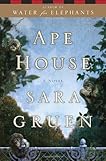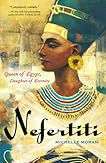This novel is the fictional account of the disastrous attempt by Sir John Franklin and his crew to discover the mythic Northwest Passage. In 1845 they embarked on the Terror and the Erebus for a three year voyage only to be lost for ever in the unforgiving Tundra. What happened is the meat of this stunning story.
This story partly inspired by genuine events and based on real persons is an inventive and elegantly narrated weaving treads in a seamless tapestry of diary entries, scientific diagrams, letters, poems maps and musical sheet. This book reads beautifully as a series of superbly crafted vignettes.
Francis Crozier, Sir Franklin right hand man, provides the principal source for the Arctic narrative. Through his eyes he slowly dismantles Franklin image revealing him as he sees him and how he led his crew on a suicide mission. Through his diary, we see how the crew struggled in the savage wilderness till the very end.
In stark contrast, while Franklin’s crew are starving, Lady Jane Franklin and her niece Sophia both are feasting at elaborate tea parties and indulging in the refined world of balls. The author has a real eye for beauty and due to the richness and complexity of her language the Victorian drawing rooms and the high drama of the freezing Arctic come vividly alive. Throughout the novel continues contrasting the two separate worlds and reflecting life in both setting. This juxtaposition is well done although the setting that started beautifully soon lapsed into monotony.
Not everyone will like this style I for one had difficulty adjusting to the narrative and I prefer to see lots of action in historical fiction, this one is more dialogue driven than anything else. Although the story is familiar the spin given by Ms. Fortier is nonetheless quite original.



















No comments:
Post a Comment